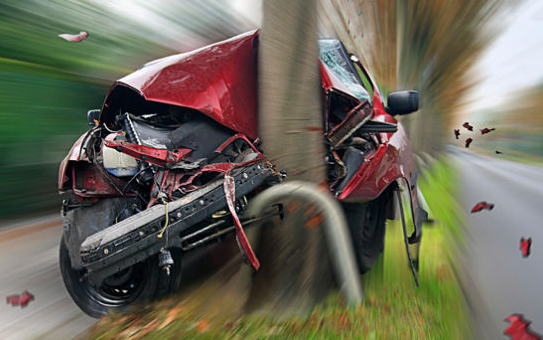6 Ways To Avoid A Car Accident

No one tries to get into a car accident—that’s why they’re called “accidents.” But even though the roads are never 100% safe, there are certain habits you can maintain that will help keep you safer as you drive.
The leading cause of accidents is distracted driving. Eating, putting on makeup, texting, placing a phone call, or anything else that takes your attention off the road is considered “distracted driving.” Even changing the radio station or talking to a passenger can distract you from the cars and people around you.
When you drive, avoid distractions as often as possible. Wait to respond to texts, eat before you leave for work in the morning, and set up your GPS before you start the car.
Drunk driving is, of course, another leading causes of car accidents. Driving under the influence is one of the most dangerous, irresponsible ways to drive. Unlike other conditions that make driving unsafe, drinking and driving is completely preventable on your part. Decide now to never drink and drive—and to never let your family or friends drive intoxicated either.
Instead, designate a driver if you’re going to a social gathering or party. If you’re on your own, take a taxi or other public transportation instead of driving yourself.
Speeding isn’t just about obeying the law or avoiding tickets. The faster you go, the less control you have over your vehicle, especially in adverse weather conditions. Your reaction time lessens considerably when you drive above the posted limit. Speed limits are chosen for good reasons (particularly in places like school zones, parks, and curvy highway roads), and ignoring them increases your risk of getting in an accident.

It might not seem as important to use a blinker when there is no one else around or it seems obvious which way you’re turning, but use your blinkers anyway. Signal in parking lots, turn lanes, and every time you merge—there is no such thing as signaling too much.
A lot of confusion and dangerous miscommunication between drivers will be avoided if you make signaling a habit.
Don’t crowd other drivers. Tailgating or cutting people off is a good way to lose control of your car and cause a fender bender (or worse). Crowding other drivers raises tension for both you and the other driver, and can result in distracted driving or road rage.
Be courteous on the road. Give other cars ample space—drive at least 3 seconds behind the vehicle in front of you. Signal a few seconds before you merge to give other drivers a chance to let you in, and leave yourself an escape route should a car brake suddenly in front of you or try to cut into your lane.
In some situations, you are only as safe as your car. You cannot control external factors like weather, other drivers, or road conditions, but you can control how safe your own vehicle is.
Take your car in for maintenance regularly. Get the oil changed according to the manufacturer’s specifications, keep your tires rotated, and take your car in at the first sign of trouble—waiting for service only increases the risk of a dangerous malfunction on the road.
Some auto shops like Speedy Brake and Apollo Muffler specialize in specific car repairs, so keep a list of these specialized mechanics available so that you can contact them at short notice.
Being safe in the car is a decision you have to make. No one can control what other drivers do, but you have the power to make your driving experiences as safe as possible. Take the necessary precautions and follow the law, and you’ll be more than likely to arrive at your destination safely.
